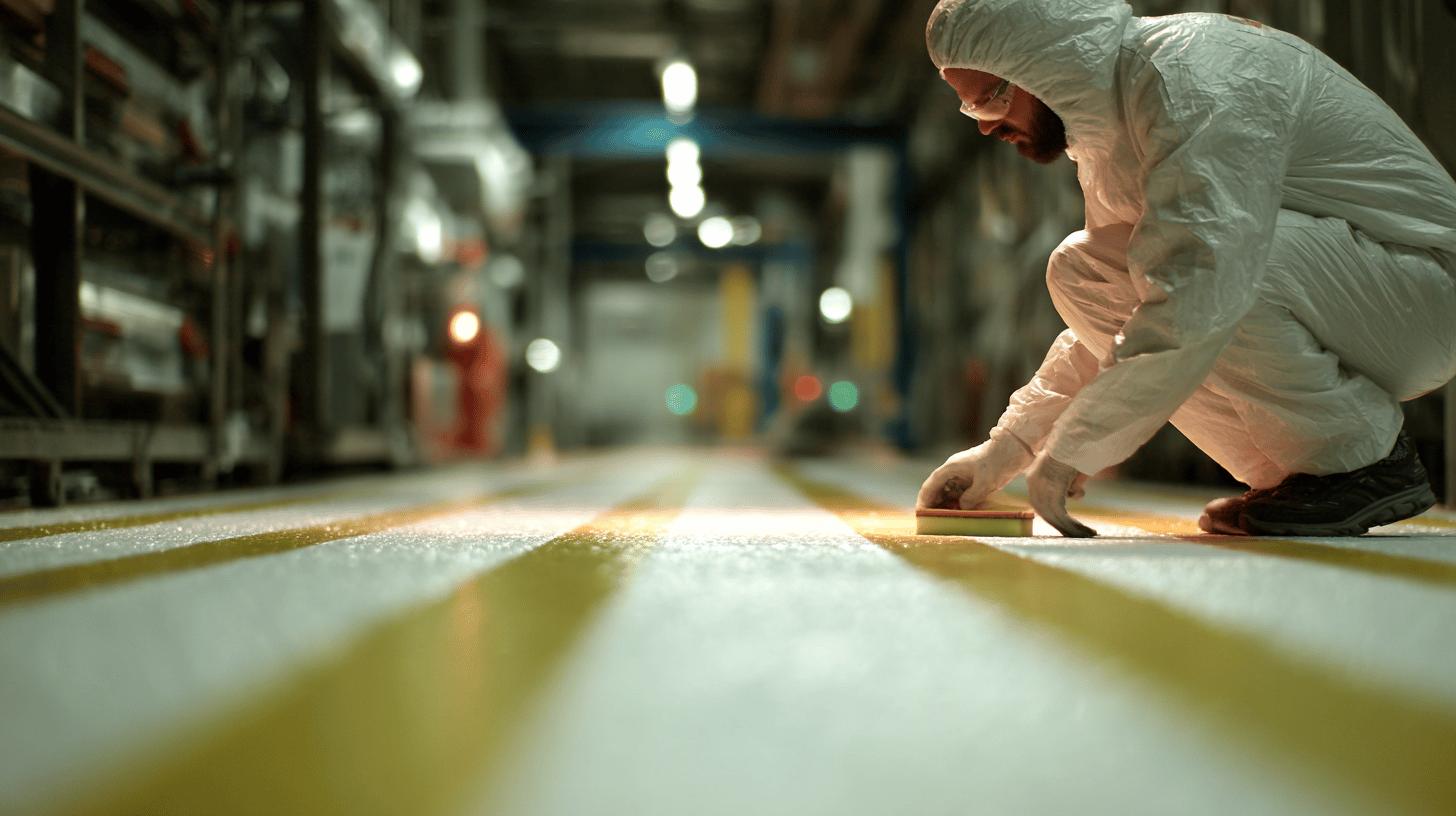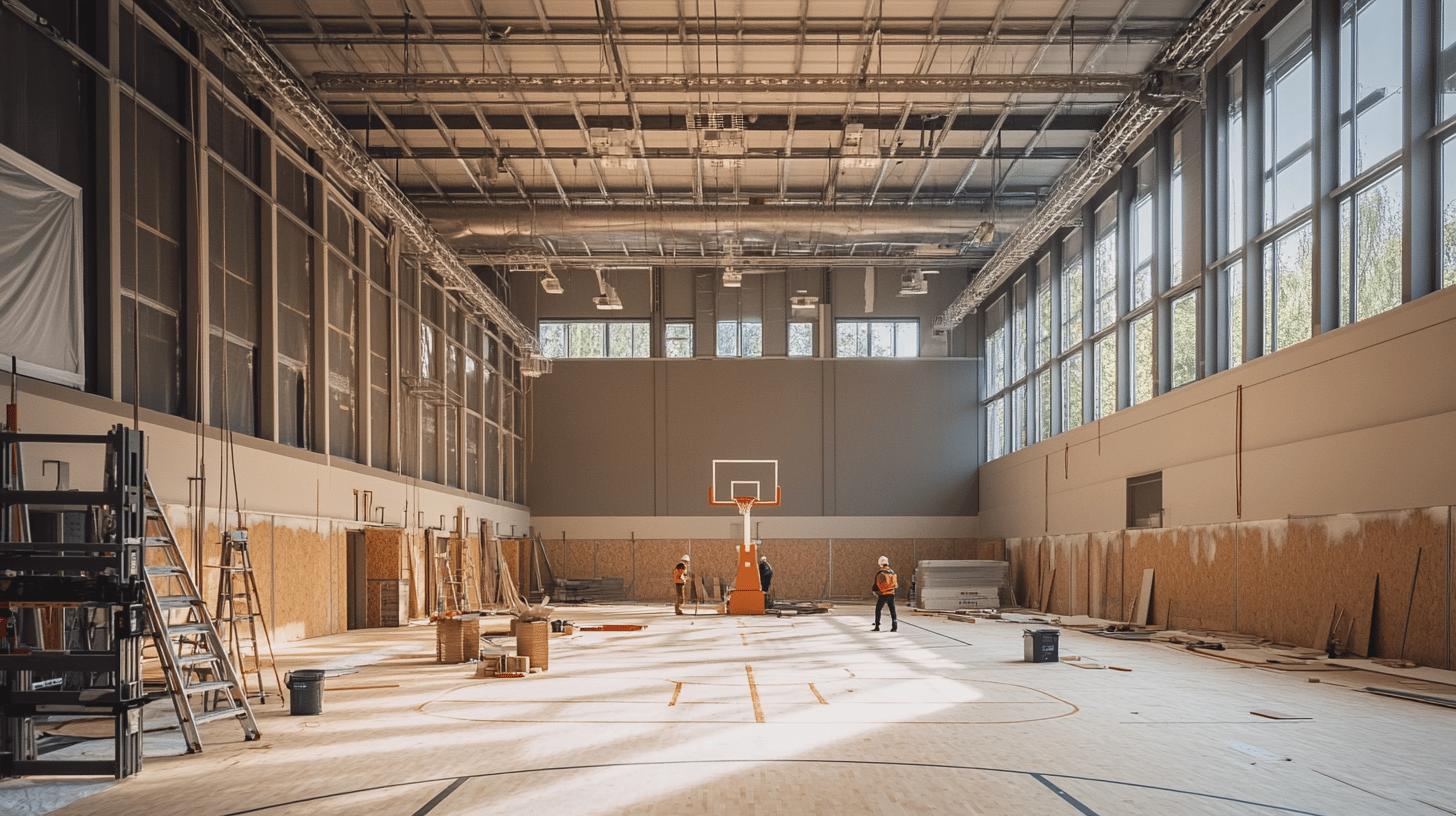How long do resin line-mark colours truly last in high-traffic areas? This question lies at the heart of maintaining vibrant and effective demarcations in various environments, from pedestrian walkways to bustling industrial settings. Resin line-mark durability plays a pivotal role in ensuring these markings remain bright and clear, thus enhancing safety and area visibility. This article delves into the factors influencing resin longevity, offers practical maintenance tips, and explores real-world performance comparisons with materials like thermoplastic and MMA paints. Discover how to maximise the lifespan of your resin line-markings and uphold optimal visual appeal over time.
Understanding Resin Line-Mark Durability
Resin line-markings are crucial in a variety of settings due to their versatility and durability. They are commonly used in pedestrian walkways, traffic zones, and even demarcation lines in sports halls. These markings help in clearly defining areas, ensuring safety, and optimising space management. In industrial environments, resin line-markings are employed to delineate hazardous zones, keep-clear areas like fire exits, and pathways for machinery, enhancing both operational efficiency and safety.
- Safety Enhancements: Clearly define safe zones and hazardous areas.
- Area Delimitations: Efficiently manage space by marking specific zones.
- Durability: Withstand high traffic and environmental stresses.
- Visibility: Offer high visibility even in low-light conditions.
- Customisation: Allow for tailored designs including logos and symbols.
.
When comparing the durability of resin line-markings with other materials such as Methyl-Methacrylate (MMA) and thermoplastic paints, resin offers notable advantages. While MMA is recognised for its superior durability and high resistance to wear, it is often more expensive and requires precise application conditions. Thermoplastic paints are also durable and commonly used for road markings but may not hold up as well in high-traffic indoor environments. Resin, on the other hand, provides a balance of durability and cost-effectiveness, making it an ideal choice for both indoor and outdoor applications where longevity is a priority.
Factors Affecting the Longevity of Resin Colours
In high-traffic areas, the longevity of resin line-marking colours is crucial for maintaining visibility and safety. Colour retention ensures that demarcation lines remain clear and effective over time, reducing the need for frequent repainting. Resin colours are particularly vulnerable to environmental factors that can accelerate fading and degradation, necessitating careful consideration of these influences to enhance durability.
UV Exposure and Its Effects on Resin
How does UV exposure affect resin colours? Ultraviolet (UV) light from the sun is a significant factor in resin colour fading. Over time, exposure to sunlight can cause resin colours to lose their vibrancy and fade, reducing the contrast and visibility of line markings. This occurs as UV radiation breaks down the chemical bonds in the pigments and resins, leading to a gradual depigmentation. To mitigate UV damage, UV-resistant additives can be incorporated into the resin formulations, offering improved protection against sunlight. Additionally, selecting resin colours with high UV stability can significantly prolong their lifespan in outdoor settings.
Chemical and Weather Exposure
What impact do chemicals and weather have on resin durability? Chemical exposure, such as from oil spills, cleaning agents, and other industrial substances, can compromise the integrity of resin colours. These chemicals can react with the resin, causing discolouration or even peeling. Weather conditions, including rain, snow, and temperature fluctuations, also play a critical role in resin longevity. Moisture from rain and snow can penetrate the resin surface, while freeze-thaw cycles can cause cracking and delamination. To counter these effects, choosing resins with chemical resistance and weatherproofing properties is essential. Regular maintenance, such as cleaning and applying protective coatings, can further safeguard resin line-markings from environmental damage, ensuring their effectiveness and longevity.
Maintenance Tips for Prolonging Resin Colour Life

Routine maintenance is crucial for prolonging the colour life of resin line-markings. How does maintenance affect resin longevity? Regular maintenance helps preserve the vibrancy and visibility of resin colours, reducing the risk of premature fading or discolouration. By implementing a consistent maintenance routine, such as cleaning and inspection, resin markings remain clear and effective, minimising the need for costly reapplications. This proactive approach not only enhances the aesthetic appeal of the markings but also ensures safety and compliance in various environments.
- Regularly clean resin markings to remove dirt and debris.
- Use mild cleaning agents to avoid damaging the resin surface.
- Apply protective coatings to shield against UV and chemical exposure.
- Inspect markings routinely for signs of wear or damage.
- Address minor repairs promptly to prevent further deterioration.
.
Professional maintenance services play an integral role in extending the life of resin line-markings. Why are professional services necessary for resin maintenance? Professionals possess the expertise and equipment necessary to perform thorough inspections and apply advanced protective treatments. Their interventions can identify potential issues before they become significant problems, offering a cost-effective solution to maintaining resin marking quality. Additionally, professional services ensure that maintenance practices align with industry standards, maximising the performance and durability of resin colours in demanding environments.
Comparing Resin Durability with Other Materials
Selecting the appropriate line-marking material is crucial for ensuring longevity and effectiveness in various environments. How do resin, thermoplastic, and MMA paints compare in terms of durability? Resin line-markings are renowned for their resilience, offering a balance between durability and cost. While thermoplastic paints are widely used for outdoor applications like road markings due to their robustness, they may not perform as well indoors under high traffic. MMA paints, known for their exceptional wear resistance, often come with higher costs and require specific application conditions. Understanding these distinctions is vital for making informed decisions tailored to specific durability needs.
| Material | Durability | Application | Cost |
|---|---|---|---|
| Resin | High | Indoor and outdoor, versatile | Moderate |
| Thermoplastic | Medium | Outdoor, road markings | Moderate |
| MMA | Very High | High-wear areas, specialised | High |
Durability tests consistently show that resin line-markings maintain their integrity in environments where wear and tear are significant concerns. In real-world performance, resin demonstrates superior longevity in both indoor and outdoor settings, particularly where exposure to chemicals and UV light is prevalent. Thermoplastic, while effective for short-term projects, tends to wear quicker under constant foot traffic compared to resin. MMA paints, although providing excellent durability, are not always cost-effective for all projects. Therefore, when assessing line-marking options, resin often emerges as a reliable choice for projects demanding both durability and economic feasibility.
Case Studies: Real-World Examples of Resin Line-Marking Durability
Case studies offer invaluable insights into the real-world performance of resin line-markings, providing evidence of their durability and effectiveness across diverse environments. By analysing specific scenarios where resin markings have been implemented, stakeholders can better evaluate resin line performance and make informed decisions for future installations. These examples underscore the practical benefits and challenges encountered when utilising resin for line-marking applications.
In an urban setting, a busy metropolitan city installed resin line-markings on pedestrian walkways and cycle paths to enhance safety and organisation. What was the outcome? The resin markings demonstrated exceptional durability, maintaining vibrant colours and clear visibility despite high foot and cycle traffic. One of the main challenges was the constant exposure to various weather conditions, including intense sunlight and rain. To address this, UV-resistant additives were integrated into the resin, significantly prolonging the life of the markings. The outcome highlights resin’s ability to withstand the rigours of urban environments, providing a sustainable solution for long-term traffic management.
In an industrial environment, a manufacturing plant opted for resin line-markings to delineate pathways for machinery and hazardous zones. How did resin perform in this setting? The line-markings effectively resisted chemical spills and the abrasive conditions typical of an industrial setting. Despite the challenges posed by frequent chemical exposure and heavy machinery traffic, the resin markings retained their integrity and visibility. Regular maintenance played a crucial role in preserving their condition, demonstrating the importance of upkeep in extending the lifespan of resin applications. This case study exemplifies resin’s robust performance in demanding industrial scenarios, making it a preferred choice for facilities prioritising safety and operational efficiency.
Innovations and Future Trends in Resin Technology

Recent advancements in resin technology have significantly enhanced line-mark durability, with a particular focus on improved UV resistance and eco-friendly formulations. How have these innovations impacted resin performance? By incorporating UV-resistant additives, resin manufacturers have successfully mitigated the detrimental effects of sunlight, which are known to cause fading and degradation. These additives help maintain the vibrancy and longevity of resin colours, even in outdoor environments with high UV exposure. Additionally, the development of environmentally friendly resin formulations has catered to the growing demand for sustainable solutions, reducing the ecological footprint of resin production and application.
- Enhanced UV-resistant formulations
- Development of bio-based resins
- Integration of self-healing properties
- Use of nanotechnology for improved performance
.
Ongoing research and development in the resin industry continue to drive innovations aimed at further improving line-mark durability. What are the key areas of focus for future resin technology? Researchers are exploring the potential of bio-based resins, which utilise renewable raw materials to create sustainable alternatives to traditional petroleum-based resins. In addition, integrating self-healing properties into resin formulations is a promising trend that could extend the lifespan of line-markings by allowing minor surface damage to repair itself. The application of nanotechnology is also being investigated to enhance resin performance by improving strength, flexibility, and resistance to harsh environmental conditions. These efforts underscore the industry’s commitment to advancing resin technology, ensuring that future products offer superior durability and environmental compatibility.
Final Words
Exploring the intricacies of resin line-mark durability uncovers the significance of proper application and maintenance techniques.
Competing with materials like thermoplastic and MMA paints, resin offers distinct benefits through its resilience and adaptability in various environments.
Several factors, including UV and chemical exposure, affect the longevity of resin line-markings.
Implementing routine maintenance and staying abreast of future trends can enhance resistance to fading.
Ultimately, understanding and adapting to environmental influences is key to ensuring resin line-marks remain vibrant and durable.
Through continued advancements, resin line-markings promise a sustainable future in demarcation lines across different settings.
Upgrade to resin lines → Sports Hall Markings
FAQ
How long does line marking paint last?
A: Line marking paint durability varies by type; thermoplastic and MMA paints often last several years, while resin line-markings may offer superior longevity, particularly in high-traffic and harsh environmental conditions.
Does resin colour fade?
A: Resin colour may fade over time due to environmental factors like UV exposure and chemical exposure. Regular maintenance and protective coatings can help minimise fading and prolong colour retention.
Does resin-bound fade?
A: Resin-bound surfaces can experience fading primarily due to sunlight and adverse weather conditions. Selecting UV-resistant resins and proper maintenance routines helps preserve the vibrancy of resin-bound installations.
Does resin fade over time?
A: Resin surfaces are prone to fading over time, influenced by UV exposure, chemicals, and weather. Employing protective measures and choosing advanced resin formulations can reduce fading and extend colour durability.


